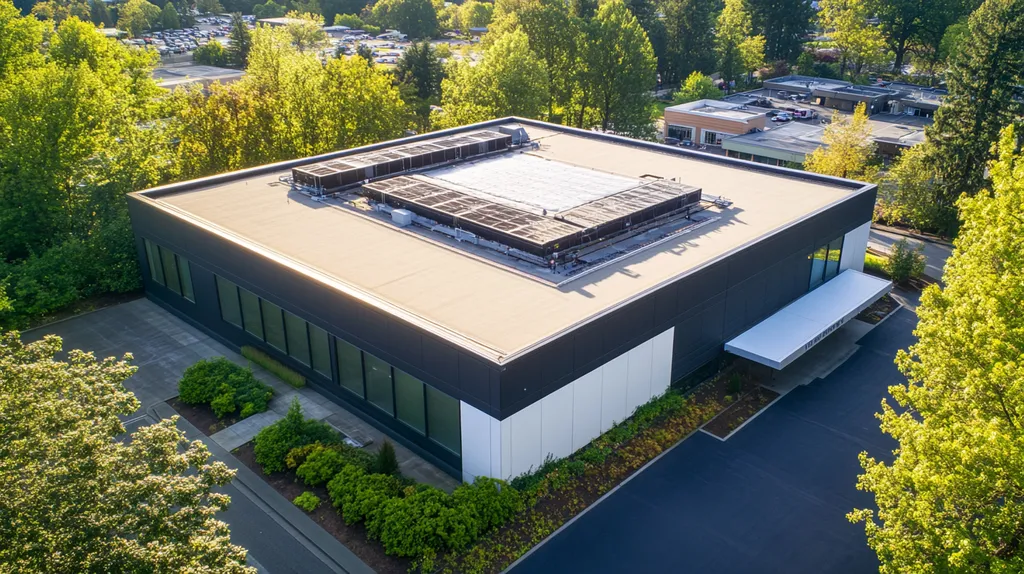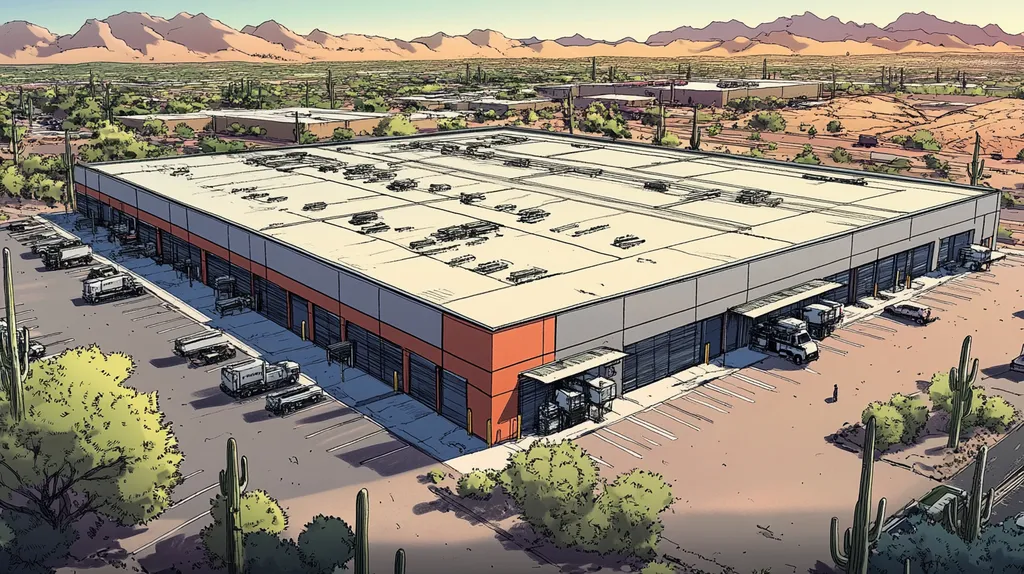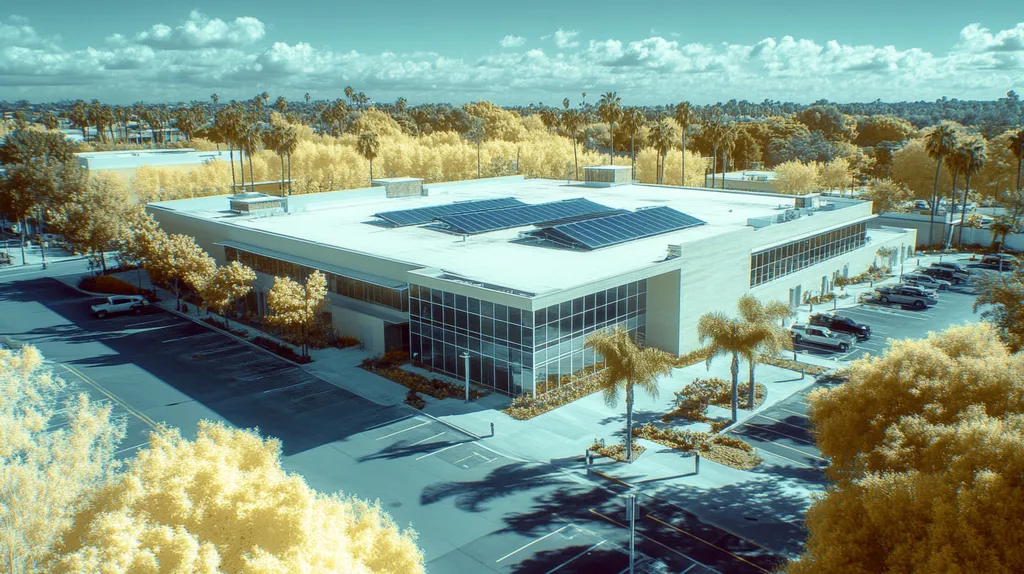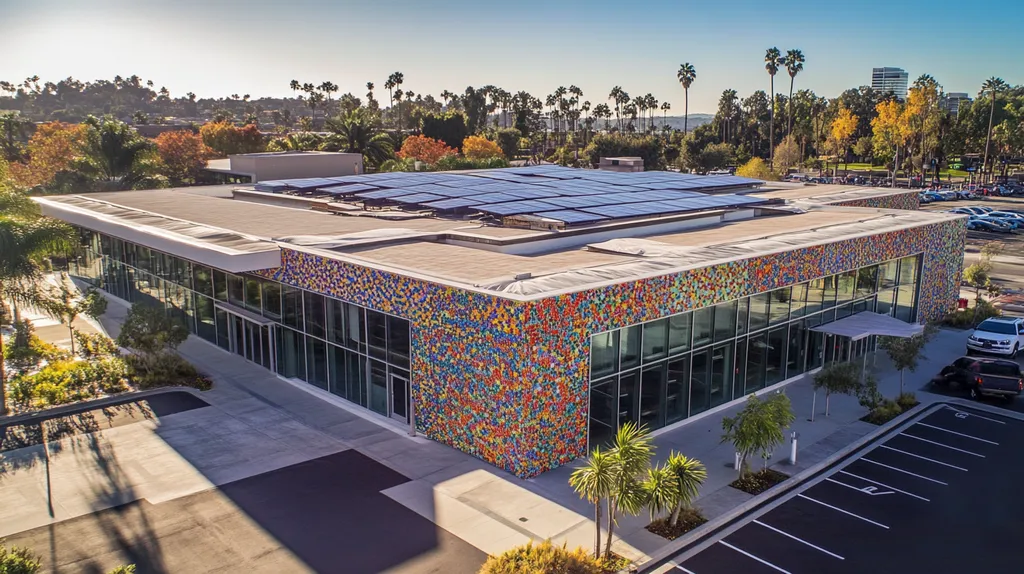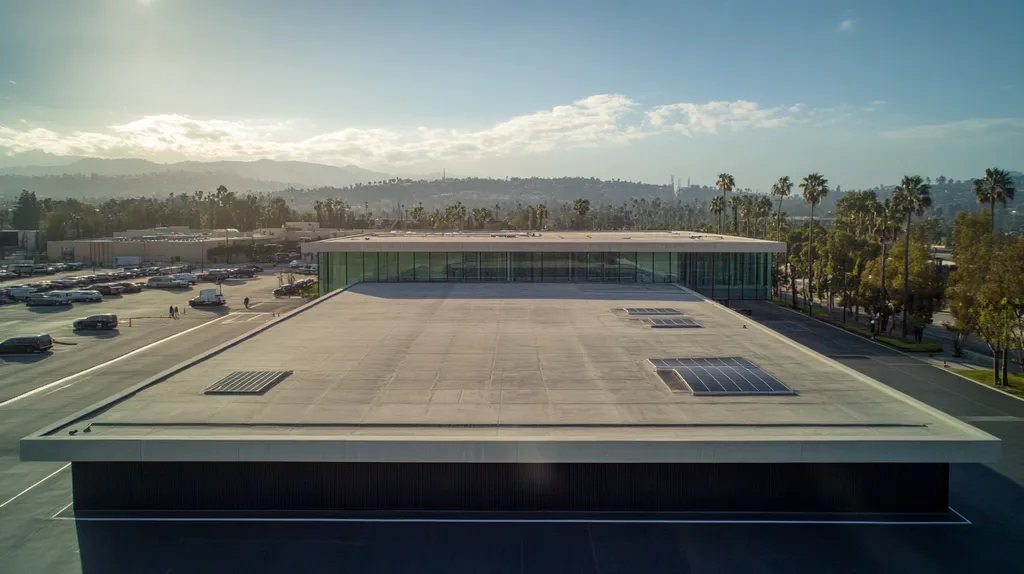In commercial roofing, moisture is the silent destroyer that leads to 70% of all roof failures, causing billions in damage annually. What’s even more concerning? Many property owners still skip crucial moisture testing before applying protective coatings.
From compromised structural integrity to mold growth and warranty violations, the consequences of inadequate moisture testing can be devastating to both buildings and budgets.
This comprehensive guide breaks down everything facility managers and property owners need to know about moisture testing, from fundamental concepts to cutting-edge detection methods and optimization strategies that protect their roofing investments.
SECTION 1: FUNDAMENTAL CONCEPTS
Effective moisture management is vital in the realm of commercial roofing. Consider this: nearly 70% of roofing failures are linked to moisture-related issues. Without proper evaluation, unnoticed moisture can wreak havoc, leading to expensive repairs that property owners could have avoided. Understanding how moisture behaves in roofing systems is not just beneficial—it’s essential for safeguarding investments and ensuring the roof’s longevity. In this section, we’ll shine a light on the significance of moisture, the various types of moisture damage, and the indispensable role of moisture testing.
Understanding Moisture in Roofing Systems
Moisture is an ever-present companion in all building materials, but on roofs, it can spell trouble. Roofing materials can soak up moisture from numerous sources—think rain, humidity, or even that sneaky condensation. If left unchecked, this moisture can seriously compromise the roof membrane and the layers below it.
Water intrusion doesn’t just weaken the structural integrity of the roof; it can also cultivate mold and mildew, putting the health of building occupants at risk. The silent presence of moisture can accelerate wear and tear, leading to an early retirement for the roof.
By regularly monitoring moisture levels in roofing systems, property owners can establish a baseline for their roof’s health. Frequent assessments empower owners to understand their roofs’ performance and maintenance needs, shifting them from reactive to proactive management. Early detection of moisture issues significantly boosts the odds of extending the roof’s lifespan.
In short, grasping moisture dynamics in relation to roofing materials is crucial for making informed decisions that protect investments and promote a safe environment for tenants.
Types of Moisture Damage
Moisture damage can surface in several forms, each with distinct ramifications. One prevalent issue is blistering, where trapped moisture creates bubbles beneath the roof membrane. This not only accelerates aging but also contributes to further degradation of roofing materials.
Pooling water is another common consequence, increasing the risk of leaks and structural harm over time. Often, poor drainage systems play a role in exacerbating this issue, making regular evaluations of water management systems essential.
Then there’s mold growth—a serious consequence of moisture infiltration. This not only damages roof components but can also pose significant health risks for occupants. As mold spreads, ensuring compliance with health and safety regulations becomes a daunting task.
Recognizing these moisture damage types is crucial for property owners. By spotting potential risks early on, owners can take proactive measures to mitigate moisture-related challenges effectively.
Importance of Moisture Testing
Moisture testing before applying coatings on roofs is an absolute must. This proactive measure uncovers any trapped moisture lurking beneath the surface, which could lead to system failure after the coating is applied. Coatings placed over damp substrates often fail, resulting in time-consuming and costly repairs down the line.
Conducting moisture tests brings hidden issues to light, providing valuable data that shapes decisions regarding repairs or the application of coatings. Techniques like thermal moisture scanning, which uses infrared cameras to reveal wet insulation areas, are excellent for assessing moisture levels (source: WNC Roofing).
Additionally, moisture testing can help ensure warranty compliance. Many roofing manufacturers require proof of moisture testing to validate warranties, and skipping this critical step can result in significant uncovered costs if an issue arises.
Ultimately, prioritizing moisture testing signals a dedication to quality and durability in roofing projects. By recognizing and addressing moisture concerns, property owners ensure that coating applications bolster the roof’s resilience, rather than undermine it.
SECTION 2: SYSTEM COMPONENTS
Understanding the various components of a commercial roofing system is not just helpful—it’s essential for effective moisture testing. Moisture lurking beneath coatings can compromise the entire roofing structure, resulting in expensive repairs and potential damage to the building itself. Alarmingly, nearly 20% of roofs inspected show moisture problems, making awareness a top priority for property owners and facility managers. This section will delve into key roofing components that interact with moisture, including the roof deck, membrane materials, insulation, and adhesive components.
Roof Deck and Membrane Materials
The roof deck is the backbone of the roofing system, providing crucial support for everything above it. Various materials, such as metal, concrete, and wood, each have distinctive properties that can influence moisture behavior. For example, metal decks tend to transfer moisture quickly, while concrete can absorb it, leading to differing testing needs.
Membrane materials, like TPO and EPDM, are vital players in moisture management. While these materials possess water-resistant qualities, proper installation is key to their effectiveness. If the membrane is compromised, moisture can seep through, putting any coatings applied at risk.
Understanding how the roof deck interacts with the membrane lays the groundwork for successful moisture testing. Property owners should collaborate with roofing professionals to assess how these components can respond to varying climate conditions.
In summary, evaluating the moisture tolerance and compatibility of both the roof deck and membrane materials is imperative before applying coatings. A robust roof system starts with a thorough comprehension of these fundamental components.
Insulation and Adhesive Components
Insulation is not just about energy efficiency; it also plays a crucial role in moisture resistance. Common insulation materials include polystyrene, polyisocyanurate, and fiberglass, each varying in their capacity to withstand moisture. High-density insulation can minimize moisture transfer, whereas some materials might absorb water, risking deterioration over time.
The type of adhesive used to secure insulation is equally important, as it significantly affects moisture behavior within the roofing system. Water-activated adhesives might not offer the same moisture resistance as their counterparts, making informed choices essential for roofing solutions.
Striking the right balance between insulation effectiveness and adhesive choice is essential. If moisture testing uncovers trapped water beneath insulation, the potential for significant issues escalates, from invalidated warranties to the need for costly repairs.
Incorporating moisture-resistant insulation and appropriate adhesives is vital for safeguarding the roof’s performance. Ultimately, selecting the right combination can maintain a reliable roofing system for years to come.
Moisture Tolerance of Roofing Materials
Every roofing material comes with its own moisture tolerance, which plays a significant role in the overall performance of the roofing system. For instance, certain coatings can only perform optimally in dry conditions, necessitating thorough moisture testing before they’re applied.
Grasping these tolerances helps in avoiding premature coating failures. The lifespan of a product often correlates with its interaction with moisture, affecting both aesthetic appeal and functionality. Poor material choices can lead to unsightly issues like peeling, bubbling, or aging prematurely.
Monitoring moisture levels prior to coating application is crucial to ensure compatibility and longevity of the roofing materials. Property owners should invest in moisture testing to guarantee selections that enhance rather than hinder their roofing systems.
In conclusion, a comprehensive understanding of the moisture tolerance of roofing materials serves as a guiding principle for effective maintenance strategies. Taking proactive steps during the testing phase can significantly save time and costs in the future.
SECTION 3: IMPLEMENTATION METHODS
When it comes to moisture testing, the right methods are vital for commercial property owners. The stakes are high; applying coatings on a wet roof can spell disaster, leading to severe structural damage and exorbitant repair bills. In fact, studies indicate that around 30% of roofing failures arise due to moisture problems. This section explores effective implementation methods to help mitigate those risks, including thermal imaging and drone-based scans, electrical impedance and capacitance testing, as well as nuclear and core sample testing.
Thermal Imaging and Drone-Based Scans
Thermal imaging is revolutionizing roofing assessments. This innovative technique utilizes infrared technology to spot temperature variations that reveal hidden moisture below the roof surface. With a trained technician at the helm, property owners can expect rapid, precise data that exposes potential problems.
Drones equipped with thermal cameras take this a step further. They can swiftly survey expansive roof areas, pinpointing moisture pockets that might elude the naked eye. Not only does this method minimize labor costs, but it also speeds up the inspection process.
The results are illuminating—thermal imaging not only identifies moisture issues but also assesses insulation efficiency. Armed with this information, facility managers can make informed decisions about necessary repairs and upgrades.
By embracing these cutting-edge technologies, property owners can detect moisture issues early on, protecting their investments and steering clear of costly repairs in the future.
Electrical Impedance and Capacitance Testing
Electrical impedance and capacitance testing provide a reliable means to gauge moisture levels in roofing materials. This method measures a material’s electrical resistance to infer its moisture content. Typically, higher moisture levels correlate with lower resistance readings.
This non-invasive approach allows for thorough evaluations without harming the roof, which is music to facility managers’ ears. The quick turnaround on results facilitates timely decision-making regarding roof maintenance or repairs.
Conducted prior to applying coatings, these tests serve as a treasure trove of information. They guide property owners in selecting the appropriate materials and methods for application, ultimately enhancing the roof’s lifespan.
Leveraging this technology leads to a science-backed approach in commercial roofing, assuring property owners that their roofing decisions are informed and calculated.
Nuclear and Core Sample Testing
Nuclear testing represents another effective method for evaluating moisture in roofing materials. This approach employs radioactive isotopes to assess moisture levels within the roof. While it may sound daunting, rest assured that the procedure is entirely safe when executed by trained professionals following industry regulations.
Core sample testing complements nuclear methods by extracting physical samples of roofing materials for lab analysis. This technique provides highly accurate results regarding moisture presence and the integrity of materials.
Although more invasive, core sampling is invaluable when subtle moisture issues are suspected. Its detailed insights empower property owners to address potential problems proactively.
By integrating nuclear testing with core sampling, facility managers can ensure their roofs are in top shape before any coating application. This proactive stance minimizes unforeseen disruptions and expenses while bolstering roof integrity.
SECTION 4: MAINTENANCE REQUIREMENTS
Moisture intrusion is more than just a nuisance; it can lead to devastating roofing failures and significant financial burdens for property owners. Alarmingly, nearly 30% of commercial roofing projects fall victim to poor moisture management, resulting in costly repairs or premature roof replacements. To combat these risks, a solid maintenance plan is essential. This section will explore the importance of regular inspections, strategies for identifying moisture-affected areas, and effective repair procedures.
Regular Inspection Schedules
Setting a regular inspection schedule is critical for maintaining the health of commercial roofs. Experts advise conducting these inspections at least twice a year, ideally during the spring and fall. Timing is key—heavy rainfall or snow can worsen existing moisture problems, making timely inspections even more crucial.
During these evaluations, trained professionals can catch early signs of moisture intrusion before they escalate into larger issues. For instance, noticing small blisters or bubbles in the roofing material can prevent significant water damage down the line.
Moreover, a documented inspection schedule ensures consistency. Property owners should maintain records of past inspections, detailing findings and follow-up actions. This documentation proves invaluable when applying coatings or planning repairs.
Ultimately, regular inspections are an investment in the building’s health and financial stability. Proactive measures taken now can save substantial costs and headaches later by avoiding emergency repairs or premature roof replacements.
Identifying and Marking Moisture Areas
Identifying and marking areas prone to moisture is a crucial step in effective roof maintenance. Advanced moisture detection tools, like infrared thermography and electrical capacitance meters, make non-invasive health assessments possible.
Once these moisture-prone areas are identified, property managers should mark them clearly for easy reference during future inspections. This method ensures maintenance crews can quickly locate problematic sections whenever they conduct follow-up evaluations.
For example, if a moisture-prone region is near a ventilation unit, it deserves special attention during subsequent inspections to catch any recurring issues. Such diligence can prevent moisture from escalating into severe damage over time.
Furthermore, utilizing a color-coded system can help visualize concerns. This simple method improves communication among teams and prioritizes areas requiring immediate attention, thus enhancing maintenance effectiveness.
Repair and Maintenance Procedures
Effective repair and maintenance procedures are vital for keeping commercial roofs in top condition. When moisture is detected, timely repairs are essential to halt further deterioration. Specifically, any compromised materials should be replaced without delay, particularly in areas where moisture intrusion is confirmed.
After repairs, consider applying moisture-resistant coatings to bolster the roof’s defenses. These coatings serve as a protective barrier against future moisture issues, but they must be applied only once the substrate is confirmed to be dry.
Additionally, establishing a routine maintenance protocol is important. Clearing debris from roof drains and ensuring proper water flow will help avoid standing water, a common culprit in roof damage.
Finally, ongoing education for maintenance staff regarding the latest repair techniques and materials can boost these procedures’ effectiveness. Staying informed about industry advancements ensures that maintenance is carried out with the highest quality standards, ultimately extending the life of the roofing system.
SECTION 5: PERFORMANCE METRICS
Measuring moisture content accurately before applying coatings on commercial roofs is more than just a precaution—it’s a necessity. With a staggering 30% of roofing failures linked to moisture issues, ensuring proper moisture levels can save property owners from hefty repairs and loss of investment. Knowing how to gather and interpret performance metrics empowers facility managers to make informed, confident decisions. This section dives into effective methods for measuring moisture content, the significance of relative humidity testing standards, and how to analyze test results for optimal roofing performance.
Measuring Moisture Content Accurately
Accurate measurement of moisture content in roofing substrates is a fundamental requirement. Tools like capacitance meters and nuclear density gauges are the go-to instruments for this task, each providing unique insights into moisture levels. Capacitance meters are quick to use, measuring the dielectric constant to show moisture presence. However, they may need calibration to ensure accuracy across different materials.
On the other hand, nuclear density gauges deliver precise measurements, but require specialized training and adherence to regulatory standards. Each type of roofing material exhibits its own moisture absorption rates, influencing the method chosen for testing. Selecting the appropriate equipment is essential for obtaining reliable results that impact long-term roof performance.
Regular moisture testing promotes proactive management of potential issues, enhancing the roof’s durability. Ignoring this crucial step could lead to significant repair costs later, underscoring the importance of detailed moisture assessment prior to applying coatings.
Relative Humidity Testing Standards
Understanding relative humidity (RH) is vital in the quest to manage moisture within roofing systems. Adhering to testing standards like ASTM F2170 allows for consistent and reliable assessment of in-situ RH levels in substrates such as concrete. The ASTM F2170 test involves inserting sensors into drilled test holes to measure the RH, offering a clear picture of the moisture conditions within the roof.
Maintaining RH levels below recommended thresholds is crucial for successful coating applications. Failure to meet these standards can lead to delamination of coatings, drastically reducing roofing systems’ lifespans. By following established RH testing protocols, property owners can protect their investments and ensure that coatings perform effectively.
Moreover, being aware of how environmental conditions affect RH levels can refine testing practices. Consistently monitoring RH in relation to these standards represents a proactive approach to mitigate moisture-related challenges in commercial roofing.
Evaluating Test Results and Data
Once moisture tests are completed, the next crucial step is evaluating the results. Understanding acceptable moisture levels for specific roofing systems and coatings is key, as manufacturers typically provide maximum moisture content guidelines. By comparing test results with these benchmarks, property owners can determine whether they are ready to proceed with coating application.
If moisture levels exceed the recommended limits, it’s wise to delay the project to mitigate risks. Collaborating with roofing professionals can clarify these results and guide the next steps. Each roofing system has its own tolerance levels—single-ply membranes differ from built-up roofing systems in how they handle moisture.
Additionally, environmental factors like recent rainfall or humidity should always be factored into analysis. Overlooking the importance of thoroughly evaluating moisture data can lead to dire consequences, including costly repairs and extended disruptions. A careful assessment of test results aids in making informed decisions, ultimately optimizing the roof’s performance and lifespan.
SECTION 5: PERFORMANCE METRICS
Measuring moisture content before applying coatings on commercial roofs is not just a smart choice—it’s essential. With about 30% of roofing failures tied directly to moisture issues, accurate moisture measurement can save property owners from costly repairs and protect their investments. Understanding performance metrics helps facility managers make confident choices. This section delves into effective methods for measuring moisture content, the importance of relative humidity testing standards, and how to analyze test results for optimal roofing performance.
Measuring Moisture Content Accurately
Accurate measurement of moisture content in roofing substrates is a foundational requirement. Tools such as capacitance meters and nuclear density gauges are commonly utilized for this critical task. These instruments gauge moisture levels using different methods, delivering vital information that shapes property management decisions.
Capacitance meters are user-friendly and offer quick insights by measuring the dielectric constant of materials, revealing the presence of moisture. However, users must calibrate these devices regularly to ensure their accuracy across various roofing materials. On the other hand, nuclear density gauges provide highly precise readings but require trained professionals to operate them in adherence to stringent regulatory standards.
Each roofing material has unique moisture absorption characteristics, which can affect the choice of testing method. Selecting the appropriate equipment is crucial for accurate and reliable results. Ultimately, thorough moisture measurement significantly enhances the long-term performance of roofing systems.
Regular moisture testing fosters proactive management of moisture-related challenges, boosting durability and overall performance. Overlooking this key step could lead to hefty repair bills down the line, emphasizing the critical need for accurate moisture assessment before applying coatings.
Relative Humidity Testing Standards
Understanding relative humidity (RH) is key to managing moisture within roofing systems. Adhering to established testing standards, such as ASTM F2170, ensures consistent and reliable assessments of in-situ RH levels in substrates like concrete. By following these guidelines, property owners can obtain trustworthy data regarding the moisture conditions affecting their roofs.
The ASTM F2170 test involves inserting sensors into drilled test holes to measure the RH accurately. This straightforward method creates a clear picture of moisture levels within the roofing substrate. It’s critical to maintain RH levels below recommended thresholds for coating applications to be effective.
Failure to comply with these standards can lead to coating delamination, significantly diminishing a roofing system’s lifespan. By adhering to established RH testing protocols, property stakeholders can safeguard their investments and ensure that coatings perform as intended.
Moreover, recognizing how environmental factors—such as temperature and humidity—impact RH levels can refine testing practices. Regular monitoring in accordance with these standards represents a proactive approach to minimizing moisture-related risks in commercial roofing.
Evaluating Test Results and Data
Once moisture tests have been conducted, evaluating the results becomes paramount. Understanding acceptable moisture levels for specific roofing systems and coatings is essential, as manufacturers typically provide maximum moisture content guidelines. By comparing test results with these benchmarks, property owners can evaluate readiness for coating application.
If moisture levels exceed the recommended limits, it’s vital to postpone the project, allowing time to address moisture risks effectively. Collaborating with roofing professionals can help clarify these results and guide the next steps based on the findings.
Neglecting a thorough evaluation of moisture data can result in dire consequences, including high repair costs and prolonged disruption. A careful assessment of test results facilitates informed, strategic decisions, optimizing roofing performance and extending the life of the roofing system.
The Bottom Line
With 70% of commercial roof failures stemming from moisture-related issues, proper testing before coating application isn’t just recommended—it’s mission-critical for building survival.
Modern moisture testing tools and techniques have transformed what was once guesswork into a precise science, enabling property owners to make data-driven decisions that protect their investments.
From thermal imaging to nuclear testing, today’s comprehensive moisture detection methods can save facilities millions in prevented damage and extended roof lifespans.
The message is clear: skipping moisture testing before coating application is a gamble no property owner can afford to take.
By implementing regular moisture testing protocols and acting on the results, facility managers can ensure their roofing systems deliver maximum performance and value for years to come.
FREQUENTLY ASKED QUESTIONS
Q. Why is moisture testing critical for commercial roofs?
A. Moisture testing is vital because it identifies potential moisture problems that could cause roofing failures. Ignoring moisture issues can lead to costly repairs and negatively impact your investment. Regular testing helps ensure your commercial roof remains in good condition.
Q. What are the main components of a commercial roof?
A. The main components include the roof deck, membrane materials, insulation, and adhesive components. Each plays a critical role in moisture management and overall roof performance, making it essential to understand their interactions during testing.
Q. What moisture testing methods work best for commercial roofs?
A. Effective methods include thermal imaging, electrical impedance testing, and nuclear density gauges. These techniques help identify moisture presence and guide maintenance decisions, ensuring successful coating applications.
Q. How often should I inspect my commercial roof?
A. It’s recommended to inspect your commercial roof at least twice a year, ideally during spring and fall. Regular inspections can catch early signs of moisture issues, helping you avoid larger problems and costly repairs.
Q. Why monitor relative humidity in roof testing?
A. Monitoring relative humidity helps determine if conditions are suitable for coating applications. High humidity can result in delamination and premature failure of coatings, so maintaining recommended humidity levels is crucial for roof longevity.
Q. What happens if moisture levels are too high before coating?
A. High moisture levels can cause coatings to fail by preventing proper adhesion. This may lead to costly repairs when the coatings peel or bubble, ultimately compromising the roof’s integrity and performance.
Q. How can I ensure the best results from moisture testing?
A. Ensure accurate results by selecting the right testing methods and tools, and consider working with trained professionals. Regularly monitoring moisture levels and adhering to testing standards can greatly enhance your roof’s performance.

